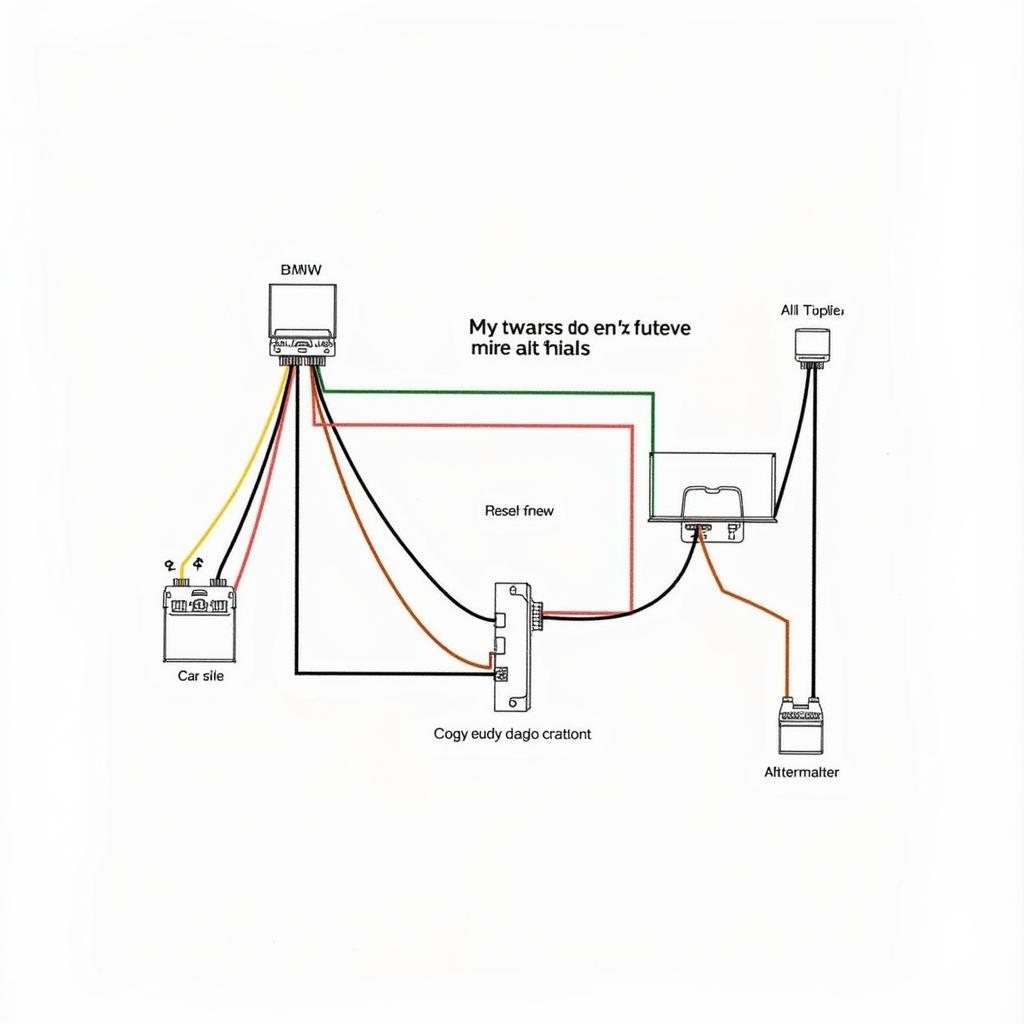The throaty growl of a BMW E36 exhaust is music to any enthusiast’s ears. But what makes this iconic car’s sound so unique? And what can you do if your E36’s exhaust note isn’t hitting the right notes? This comprehensive guide delves deep into the world of BMW E36 exhaust sounds, exploring everything from common issues to aftermarket modifications and remote diagnostic solutions.
Decoding the E36’s Signature Sound
The E36, produced from 1990 to 2000, holds a special place in BMW’s lineage. Its distinct exhaust note, a balance of aggression and refinement, is a product of meticulous engineering. Key factors influencing the E36’s sound include:
- Engine Configuration: The E36 was offered with a range of inline-six engines, each with its own sonic character. The displacement, valvetrain design, and firing order all contribute to the unique sound of each engine variant.
- Exhaust Manifold Design: The exhaust manifold plays a crucial role in shaping the exhaust pulses. The E36’s headers, particularly in the M3 models, are designed to optimize flow and enhance the exhaust note.
- Muffler and Resonator System: The muffler and resonator are responsible for attenuating sound and shaping the final exhaust tone. The E36’s factory exhaust system is tuned to provide a balance of performance and noise control.
Common E36 Exhaust Issues and Troubleshooting
While the E36’s exhaust system is generally robust, time and wear can lead to issues that affect sound and performance:
- Exhaust Leaks: Leaks at the manifold, flanges, or muffler connections can cause hissing noises, reduce backpressure, and decrease performance.
- Rattling or Vibrating Components: Worn-out hangers, loose heat shields, or damaged exhaust components can create annoying rattles and vibrations.
- Clogged Catalytic Converter: A restricted catalytic converter can lead to a loss of power, reduced fuel economy, and a more muffled exhaust note.
Troubleshooting Tips:
- Visual Inspection: Examine the entire exhaust system for signs of damage, rust, or loose components.
- Listen Carefully: Identify the location and type of noise to narrow down potential issues.
- Check for Error Codes: Use an OBD-II scanner to read diagnostic trouble codes that may indicate exhaust system problems.
Unlocking the E36’s Acoustic Potential: Aftermarket Exhaust Modifications
For those seeking to enhance their E36’s sound, the aftermarket offers a vast array of options:
- Cat-Back Exhaust Systems: Replacing components from the catalytic converter back offers the most significant sound customization. Different muffler designs, pipe diameters, and resonator configurations can dramatically alter the exhaust note.
- Headers: Aftermarket headers, often designed with equal-length runners and high-flow collectors, improve exhaust scavenging and produce a more aggressive sound.
- Muffler and Resonator Delete: Removing the muffler or resonator can significantly increase exhaust volume but may result in excessive noise and drone.
Choosing the Right Setup:
Selecting the right exhaust modifications depends on your desired sound, budget, and local regulations. Consider these factors:
- Sound Profile: From deep and throaty to high-pitched and aggressive, countless sound profiles are achievable. Research different brands and models to find your preferred sound.
- Material and Construction: Stainless steel exhaust systems offer durability and corrosion resistance, while titanium systems provide lightweight performance and a unique tone.
- Drone and Cabin Noise: Larger diameter piping and muffler deletes can lead to excessive drone, especially at cruising speeds.
“Remember, modifications can affect your vehicle’s emissions and warranty. Always choose reputable brands and ensure your modifications comply with local regulations.” – Mark Stevenson, Senior Automotive Engineer at Cardiagtech
Embracing the Future: Remote Diagnostics for E36 Exhaust Systems
Modern technology offers innovative solutions for diagnosing and resolving E36 exhaust issues remotely:
- Remote Diagnostic Scanning: Specialized software allows technicians to access your vehicle’s onboard computer system remotely, reading diagnostic codes and monitoring sensor data in real-time.
- Virtual Consultations: Connect with experienced technicians via video conferencing to discuss symptoms, receive expert advice, and even guide visual inspections.
Benefits of Remote Diagnostics:
- Convenience: Diagnose and address issues from the comfort of your own garage or even while on the road.
- Cost-Effectiveness: Potentially avoid unnecessary trips to the mechanic and receive faster diagnoses.
- Access to Expertise: Connect with specialized technicians with extensive E36 knowledge, regardless of your location.
“Remote diagnostics empowers E36 owners with knowledge and control, allowing for more informed decisions regarding their vehicle’s maintenance and repair.” – Emily Chen, Lead Software Developer at Cardiagtech
Conclusion
The BMW E36’s exhaust sound is an integral part of its legendary status. From understanding its unique acoustic signature to troubleshooting common issues and exploring aftermarket enhancements, we’ve covered the essentials of keeping your E36 sounding its best. As technology evolves, remote diagnostics emerges as a powerful tool for E36 owners, providing convenient and cost-effective solutions for a smoother ownership experience.
For expert advice, remote diagnostic services, and tailored solutions for your BMW E36, contact Cardiagtech today at +1 (641) 206-8880 or [email protected]. Our team of specialists is dedicated to helping you achieve the perfect exhaust note for your E36. Our workshop is located at 276 Reock St, City of Orange, NJ 07050, United States.


